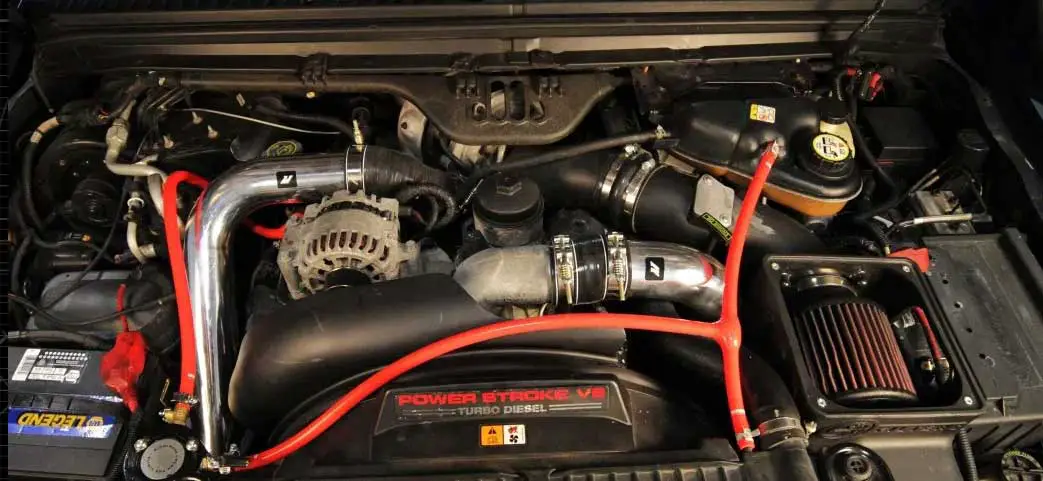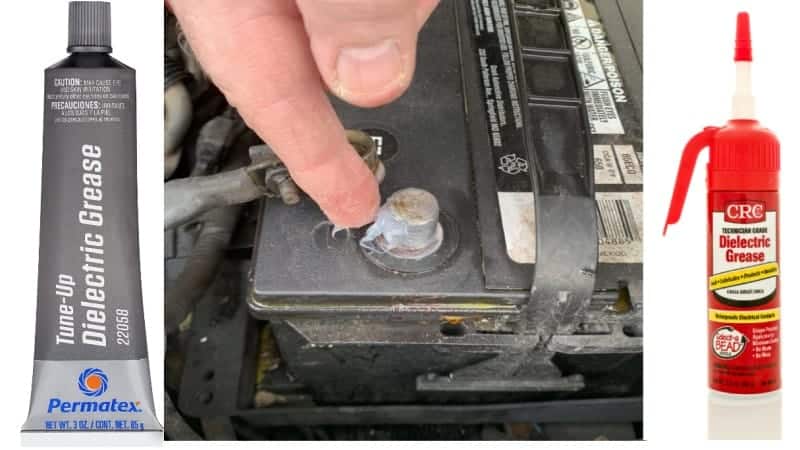Navigating through car maintenance tasks can be a tricky terrain, especially when a simple mistake, like mistakenly pouring brake fluid into the power steering reservoir, occurs.
The ease with which such errors happen is a shared experience among many.
However, there’s no need to panic.
In this article, we’ll delve into practical steps to swiftly rectify such mishaps and prevent potential serious damage.
Join us as we explore these solutions in detail and uncover additional insights to enhance your understanding of effective car maintenance practices.
What should you do if you accidentally add brake fluid to power steering?
Accidentally adding brake fluid to your power steering can be a worrisome situation, but there are essential steps to rectify the error and safeguard your vehicle’s functionality. It’s crucial to handle this mishap promptly and methodically to prevent potential damage. Here’s a detailed guide on what to do if you find yourself in this predicament:
-
Do not Start the Vehicle
The immediate response to this mistake is to refrain from starting the vehicle. Running the engine could result in damage to plastic components or corrosion of metal surfaces within the steering system.
-
Check Your Car’s Fluid System
Before attempting any corrective measures, inspect your car’s other fluids and lines. Traces of brake fluid may have traveled through various components and lines connected to both the brake and power steering hydraulic systems. Avoid starting the engine right away to prevent further damage and contamination.
-
Flush Out the System
With the vehicle turned off, proceed to flush out any residual brake fluid remaining in the system. Connect a hose to the reservoir tank and flush it with clean power steering fluid. This process removes any lingering traces of old brake fluid, restoring the system’s proper functionality.
-
Replace Any Damaged Components
After successfully flushing out all traces of brake fluid, thoroughly inspect the system for visible signs of wear or corrosion caused by the incorrect fluid. Promptly replace any damaged components to prevent potential issues in the future.
-
Clean What You Can
If a professional inspection reveals no serious damage, you may be able to undertake the cleaning process yourself. However, it’s crucial to follow the directions provided by a trained technician or mechanic to avoid causing further harm during the cleaning process.
-
Refill with the Correct Fluid
Once all damaged components have been replaced, and traces of old brake fluid have been eliminated, refill the reservoir tank with clean power steering fluid. Check for leaks using a scan tool or diagnostic equipment. If everything appears in order, your vehicle is ready for use.
-
Consider Professional Help
If you feel uncertain about any aspect of this process, especially when it comes to identifying damaged parts or flushing out old fluids, seeking professional help is advisable for safety reasons.
By taking these steps, you significantly reduce the risks associated with this specific issue. Additionally, after completing all checks, ensure thorough flushing of both fluids before refilling them with new ones to prevent any potential contamination accidents in the future. This comprehensive approach ensures the optimal performance and longevity of your vehicle.
Efficiently Removing Brake Fluid from the Power Steering Reservoir: A Step-by-Step Guide
Step 1: Locate the Power Steering Reservoir
Begin by identifying the power steering reservoir’s location. Typically found at the base of the power steering belt drive near its connection to the engine, pinpointing this crucial component is essential before initiating any brake fluid removal process.
Step 2: Put on Safety Gear
Prioritize safety by donning protective gear. Equip yourself with safety goggles and gloves to shield against potential chemical burns or skin irritation caused by the corrosive nature of brake fluid. Ensure these safety measures are in place before proceeding further.
Step 3: Drain Reservoir Fluid
- Choose the Right Tool: Opt for an electric drill-powered suction tool or a manual one for the fluid drainage process. Ensure the tool is clean and in working order.
- Prepare the Tool: Pour fresh brake fluid into the device cup of the suction tool. Attach the tool securely over the removed power steering reservoir cap.
- Secure Tubing if Necessary: Use pressure-resistant protective tubing if required to prevent hazardous fumes or fluid splashing during the drainage process.
- Initiate Draining: If using an electric drill, turn it on gradually, extracting all remaining brake fluid from the reservoir until no more can be obtained.
Dispose of Used Fluids: Adhere to local regulations for hazardous waste disposal when disposing of the drained brake fluid. Safely discard all used fluids at designated waste disposal centers.
Step 4: Refill & Test System
- Inspect and Clean Components: After draining, inspect all components for any leftover residue from brake fluid concentrations. Clean as needed to ensure a pristine system.
- Refill with New Fluid: Replenish the reservoir with a clean mixture of power steering fluid according to the specific model size and manufacturer guidelines. Follow recommended proportions when replacing stock reservoirs.
- Reattach Parts: Once refilled, reattach all components securely to their designated positions.
Step 5: Test Drive Your Vehicle
Conduct a brief test drive to evaluate the efficiency of the power steering system. Pay attention to any irregularities or quirks in the system’s performance. This final step ensures that your power steering functions optimally after the brake fluid removal process.
By meticulously following these step-by-step instructions, you can efficiently and safely remove brake fluid from your power steering reservoir, contributing to the overall well-being and performance of your vehicle.
Also Read: What Causes Grooves in Brake Rotors? – 8 Causes & Solutions
Which Fluid Is Suitable for Power Steering?

1: Determine Conventional or Synthetic Requirement
- Start by identifying whether your car requires conventional or synthetic power steering fluid. Newer vehicles typically demand synthetic, while older ones usually use conventional fluid.
- Consult your owner’s manual or conduct online research to confirm the specific type recommended for your vehicle.
2: Understanding Conventional Power Steering Fluid
- Conventional power steering fluid is a mineral-based hydraulic oil that originated with the introduction of power steering systems in the 1950s and 1960s.
- Composed primarily of hydrocarbon molecules derived from petroleum, it includes additives to enhance viscosity (facilitating better flow through narrow lines) and detergency (preventing air bubble formation in the pump).
- Any substitute for conventional oil must be approved by automobile manufacturers before use in their vehicles.
3: Insight into Synthetic Varieties
- Synthetic power steering fluids are primarily crafted from Group IV base oils, such as polyalphaolefins (PAOs), manufactured using hydrocracking processes.
- Enhanced with detergents, anti-foaming agents, oxidation inhibitors, and other additives tailored for specific needs.
- Synthetic oils offer superior protection against engine wear caused by heat and friction due to their molecular structure lacking impurities found in conventional oils.
4: Advantages of Synthetic Oils
- Synthetic oils provide improved lubrication capabilities in both cold and hot conditions.
- They exhibit greater resistance to breakdown caused by high temperatures over time compared to conventional oil counterparts.
5: Consider Climate Conditions
- The choice of power steering fluid should consider climate conditions. Harsh winters benefit from winter-grade fluid, while warm climates favor summer-grade formulations designed for hot weather.
- In severe service conditions, fluids with extra friction modifiers or special-purpose ingredients may be necessary for added protection.
6: Manufacturer’s Recommendations
- Fluids with additional properties must be approved by manufacturers to avoid voiding any warranties applicable to your vehicle.
- Some manufacturers offer their own “house brand” fluids, available through dealerships or aftermarket sources. Ensure that replacements are certified as suitable by the manufacturer.
What potential consequences might arise if you add brake fluid to power steering without addressing it?
Brake fluid and power steering play essential roles in a car’s performance, each possessing distinct properties crucial for their designated functions within the vehicle.
Mixing brake fluid with the power steering reservoir, even accidentally, can lead to significant consequences for your car.
-
Clogs & Blockages in the Power Steering System
Adding brake fluid to the power steering reservoir can result in clogs and blockages within the system. The thicker consistency of brake fluid compared to power steering fluid hampers efficient circulation. Prolonged use may lead to the accumulation of debris in hoses and lines, necessitating costly repairs or potential replacement of affected parts in the future.
-
Slip & Clutch Damage
The introduction of brake fluid into the power steering reservoir can harm the slip joint on your clutch pedal and damage seals in other components, including the transmission and differential. Brake fluid’s less smooth movement through these components can cause premature wear and tear on these delicate parts.
-
Efflorescence Build-Up
Substituting brake fluid for power steering fluid may contribute to efflorescence, characterized by crystalline deposits resulting from chemical changes as water evaporates from a liquid solution. Prolonged contact of the wrong fluids with metal surfaces within a system can lead to the breakdown of molecules, forming crystals when exposed to air. This may result in efflorescence build-up inside differentials and other areas near brake controls or wheels.
-
Defective/Inefficient Power Steering Parts
Excessive addition of brake fluid can weaken or degrade rubber seals in differentials and mechanical equipment areas around brake controls or wheels due to its caustic properties. This degradation may lead to defective or inefficient power steering parts, resulting in an unresponsive car turning radius or uncontrolled motion, such as jerking during tight turns or maneuvers at slow speeds. Regular checks on suspension bushings may become necessary, as composite materials in these areas play crucial roles in powerful systems like all-wheel drive automobiles.
What If I add A small amount of brake fluid to the power steering reservoir?
In the event that a small quantity of brake fluid is inadvertently added to the power steering reservoir, there’s no need to panic. Avoid starting the engine, as the brake fluid will blend with the power steering fluid. Utilize a syringe or fluid transfer pump to extract the mixed fluid from the power steering reservoir. Subsequently, replenish the reservoir with the appropriate power steering fluid.
Is it advisable to bring my car to the dealer if I accidentally add brake fluid to the power steering fluid reservoir?
If your vehicle is still within its warranty period, it is advisable not to opt for dealer intervention in resolving the issue. Instead, consider taking your vehicle to an independent car shop for a more cost-effective solution.
The rationale behind avoiding the dealership, especially under warranty:
- The dealer might document the incident, potentially jeopardizing your vehicle’s warranty status.
- Even with an existing warranty, you may still incur charges for the service.
Choosing a reputable and honest repair shop can result in a thorough power steering system flush at a more budget-friendly rate compared to dealership services.
Is it permissible to replace power steering fluid with brake fluid?
No, it is strongly advised to strictly adhere to the manufacturer’s recommendation and only use the designated power steering fluid. Substituting power steering fluid with brake fluid can result in severe damage to your car’s steering system.
Important Post: Power Steering Pump: Replacement, Costs, and Maintenance Guide
FAQs – What Do You Do If You Accidently Added Brake Fluid in Power Steering?
What is Brake Fluid?
Brake fluid is a hydraulic liquid that facilitates the transfer of force from the brake pedal to the vehicle’s brakes when engaged. It protects internal components from corrosion and damage caused by vaporization and oxidation. Typically composed of glycol ether-based liquids or mineral oils.
What Does Brake Fluid Do?
When you press the brake pedal, the pressure applied causes the brakes to engage, slowing down the vehicle. Brake fluids ensure consistent and reliable braking performance, making quick and efficient deceleration possible. Insufficient brake fluid levels can lead to damage and lower performance due to air entering the vacuum lines.
Where Is The Brake Fluid Located?
The brake fluid reservoir is located under the hood near the master cylinder or power steering pump, often near the convergence of hoses and cables. Depending on the car model, the reservoir cap may be orange or yellow. It is crucial to check before adding any substances.
How Often Should I Check My Brake Fluid?
Regularly check your brake fluid monthly to ensure there’s enough for safe operation, especially after short-distance trips. Additionally, have your brakes inspected by a qualified mechanic annually or more frequently. They can flush out old, contaminated brake fluid with fresh ones for optimal performance and extended part longevity.
What Is Power Steering?
Power steering is an automotive technology designed to make steering and maneuvering a vehicle easier by utilizing an auxiliary power source. This additional power provides drivers with enhanced control over direction changes, reducing steering effort and improving safety.
How Does Power Steering Work?
Power steering systems can be hydraulic or electric-powered. Hydraulic systems use a pump or electric motor to push hydraulic fluid, affecting pistons in a steering box. Electronic computer-controlled electric motors, found in newer cars, offer speed-sensitive assistance, adjusting to driving speed and providing hands-off engagement.
What Is Power Steering Used For?
Power steering enhances control at slow speeds and smaller movements, making parking and navigating city streets smoother. Speed-sensitive assistance aids highway driving, ensuring control even with hands off the wheel. Power steering requires fewer man-hours for maintenance compared to traditional linkages, contributing to cost-effective and simplified servicing throughout the vehicle’s lifespan.
What Happens if You Accidentally Put Power Steering Fluid in the Brake Fluid Reservoir?
Accidentally adding power steering fluid to the brake fluid reservoir can lead to severe consequences, potentially causing damage to the braking system. It is crucial to avoid such mix-ups and promptly rectify any errors to maintain the proper functioning of both systems.
What if I Accidentally Put Washer Fluid in Power Steering?
Introducing washer fluid into the power steering system can result in damage and compromise the system’s performance. It is essential to use the correct fluids for each vehicle component to prevent potential issues and ensure optimal functionality.
Will Brake Fluid Float on Power Steering Fluid?
No, brake fluid will not float on power steering fluid. These fluids have different compositions and densities, and they are unlikely to separate or form distinct layers. However, their incompatible mixture can lead to adverse effects on the vehicle’s systems.
What Happens if I Use Wrong Power Steering Fluid?
Using the wrong power steering fluid can result in various issues, including clogs, damage to seals, and reduced system efficiency. It is crucial to follow the manufacturer’s recommendations and use the specified power steering fluid to maintain the proper functioning of the steering system.
Conclusion
Maintaining the health of your car’s essential fluids is key to its longevity and performance.
Whether it’s the precise brake fluid ensuring efficient stops or the optimal power steering fluid enabling smooth maneuvers, each plays a crucial role.
Remember, using the right fluids and addressing any mishaps promptly ensures your vehicle runs like a well-oiled machine.
So, stay vigilant, follow recommended guidelines, and trust your ride to go the extra mile.
Keep those fluids in check, and let the road ahead be as thrilling as the journey itself!




